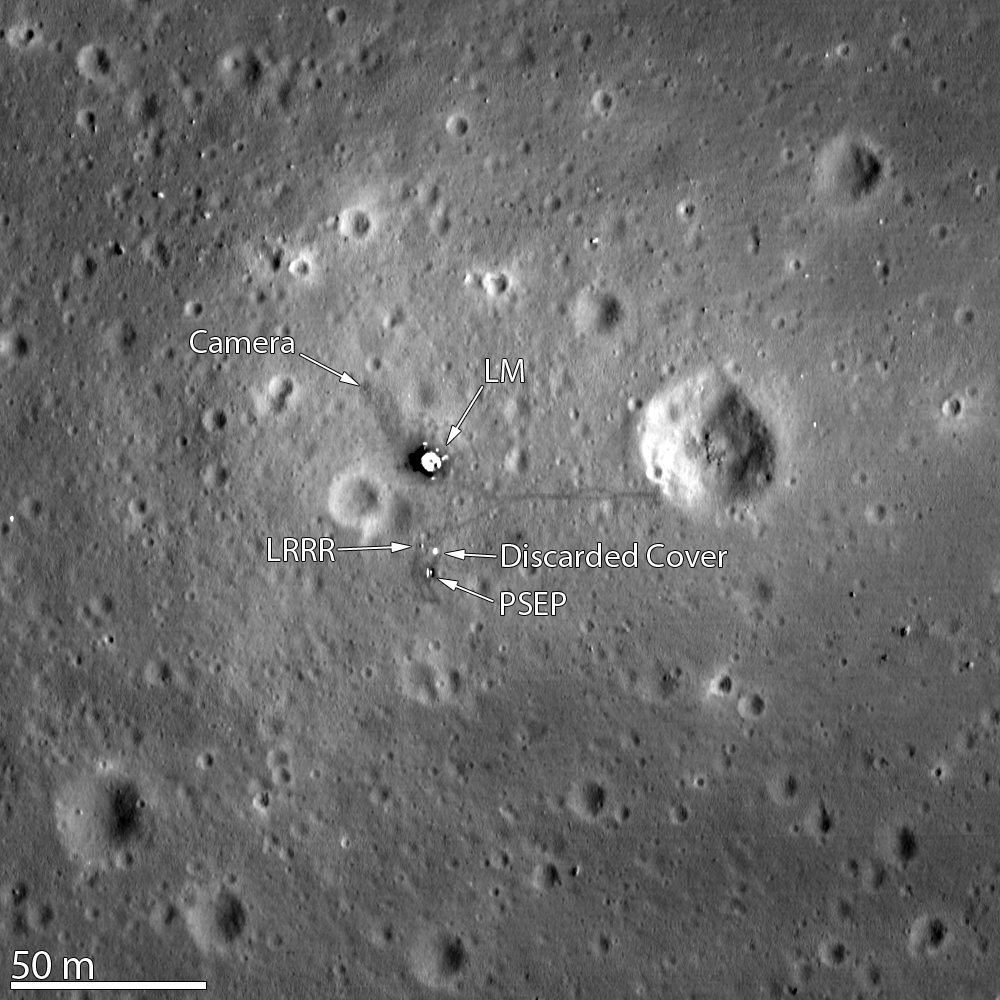
The clearest view yet of the famous Apollo 11 landing site on the moon was captured by a NASA spacecraft in orbit around our planet's natural satellite.
The agency's Lunar Reconnaissance Orbiter (LRO) zeroed in on Mare Tranquillitatis, or the Sea of Tranquility the place where humans first touched down on the lunar surface on July 20, 1969. The new image from LRO captures amazing details of the historic site, even revealing the remnants of Neil Armstrong and Buzz Aldrin's first steps on the moon.
In the image, the astronauts' tracks are the dark regions around the Lunar Module that lead to and from various scientific experiments that were set up on the surface of the moon.
LRO's camera snapped the picture as the probe flew only 15 miles (24 kilometers) above the moon's surface. The image, which was released on March 7, provides the best look yet at humanity's first venture to another world, NASA officials said in a statement.
One of the experiments that can also be made out in the image is the Passive Seismic Experiment Package, which provided the first lunar seismic measurements and continued to return data for three weeks after the Apollo 11 astronauts departed from the moon.
The discarded cover of the Laser Ranging RetroReflector is also highlighted in the image. This experiment allows precise measurements to be collected from the moon to this day, NASA officials said. [45 Apollo Moon Mission Photos]
The astronauts' tracks also lead toward Little West crater, which is located about 164 feet (50 meters) east of the Lunar Module. This was part of an unplanned excursion, when Armstrong bounced over to get a look inside the crater, near the end of the 2.5 hours that the duo spent on the surface of the moon.
The new image also clearly shows how restricted Armstrong and Aldrin were in their exploration of the area. Interestingly enough, their tracks cover less area than a typical city block, according to NASA officials.
Later, during Apollo 12 and 14, the astronauts were given more time to spend on the surface, and on the Apollo 15, 16 and 17 missions, the crews were equipped with a Lunar Roving Vehicle that enabled them to explore beyond the landing site.
The Apollo 11 astronauts returned valuable rock samples from the Sea of Tranquility landing site that revealed the moon's fiery past for the first time. The samples showed that this region of the moon was once the site of volcanic activity, and that thin flows of lava had once flowed where Armstrong and Aldrin had roamed.
LRO has captured images of other Apollo landing sites before, including fascinating pictures that show tracks left by the Apollo 17 astronauts and their lunar rover.
The Lunar Reconnaissance Orbiter has been in orbit around the moon since June 2009. The $504 million car-sized spacecraft first captured close-up images of the Apollo landing sites in July 2009, which revealed new details about the sites and even spotted hardware that was left behind on the lunar surface.
The workhorse probe is currently on an extended mission through at least September 2012.
http://www.space.com/14874-apollo-1...SPACE.com+Headline+Feed)&utm_content=My+Yahoo












